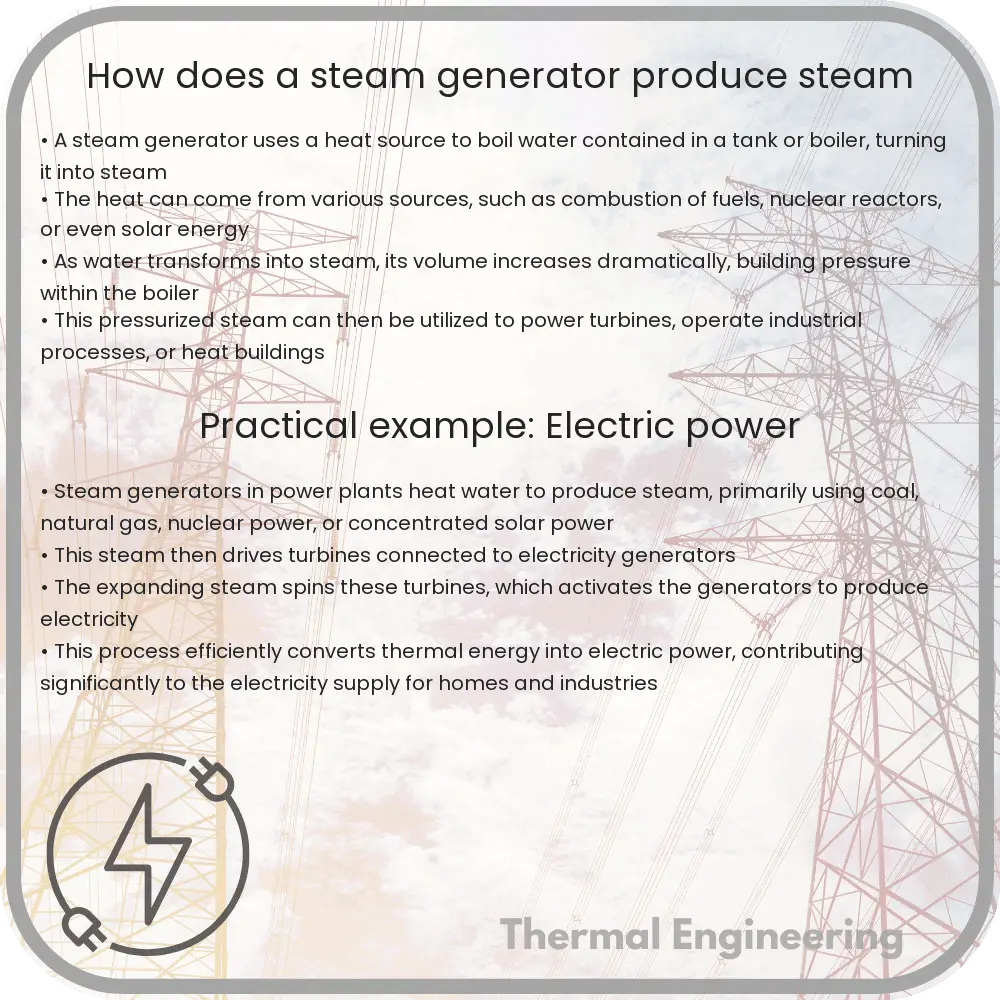Learn how a steam generator converts water into steam, its core components, operation principles, and importance in industrial applications.

Understanding the Mechanics Behind a Steam Generator
Steam generators are vital components used in various industrial and power-generation applications. The fundamental purpose of a steam generator is to convert water into steam using heat energy. This equipment plays a crucial role in creating the high-pressure steam necessary for driving turbines in power plants, sterilizing medical instruments, and performing many other industrial processes. This article explores the basic principles and operations of a steam generator.
Core Components
At its most basic level, a steam generator consists of the following main components:
- Boiler: The key component where water is transformed into steam.
- Burner: Used for heating up the water by burning fuel, which could be oil, gas, or coal.
- Control system: Regulates the temperature, pressure, and flow of steam and water.
- Feedwater pump: Pumps water into the boiler from the external source to be converted into steam.
- Economizer: A heat exchanger that increases the efficiency of the generator by warming up the incoming water using waste heat from the exhaust gases.
Operation Principle
The operation of a steam generator involves several critical steps:
- Water Introduction: Feedwater is introduced into the system using a high-pressure pump that transports the water into the boiler.
- Heating and Evaporation: In the boiler, the incoming water absorbs the heat produced by the burning of fuel, which raises the water’s temperature until it reaches boiling point and begins to evaporate.
- Steam Separation: As the water turns into steam, it rises due to the reduction in its density. The design of the boiler allows for steam, being lighter than water, to be collected at the top and drawn off for use in processes or power generation.
- Superheating: In many applications, it is desirable to increase the temperature of the steam beyond its saturation temperature to increase efficiency, a process known as superheating.
Energy Transfer and Conversion
The conversion of water to steam involves the basic principles of heat transfer and thermodynamics. When heat is added to water at the boiling point, it doesn’t raise the water’s temperature but rather changes its state from liquid to vapor. This process requires an amount of energy called the enthalpy of vaporization. The general equation for the energy required to convert water into steam can be written as:
E = m * Hv
Where:
- E is the energy required,
- m is the mass of the water, and
- Hv is the enthalpy of vaporization.
Importance in Engineering
Steam generators are fundamental in multiple branches of engineering, especially in mechanical and chemical engineering. They are integral parts of thermal power stations, refining processes, and manufacturing industries. Their design and operational efficiency directly affect the process efficiency, operational costs, and environmental impact of the facilities they serve.
Understanding how a steam generator works provides essential insight into much of today’s industrial infrastructure and technological advancements in energy efficiency and production processes. This knowledge helps pave the way for innovations in engineering applications and the optimization of systems that rely on steam generation.